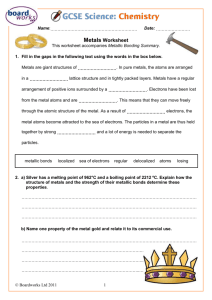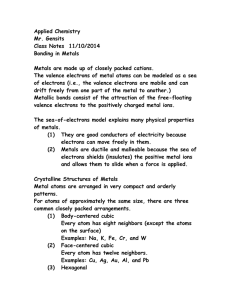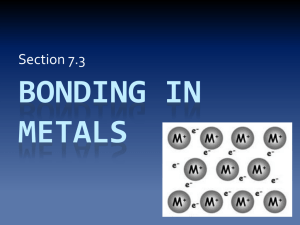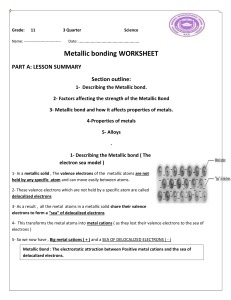Section 8.4
advertisement
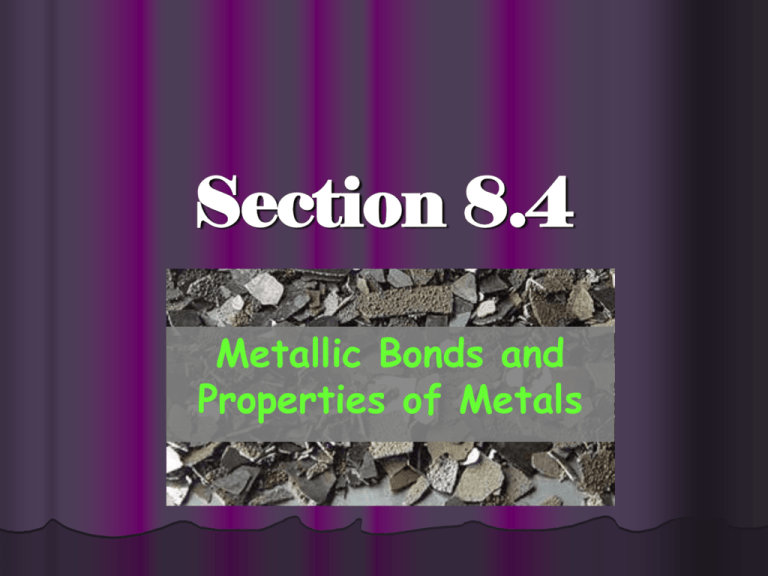
Section 8.4 Metallic Bonds and Properties of Metals Objectives Describe a metallic bond Explain the physical properties of metals in terms of metallic bonds Define and describe alloys Key Terms Electron sea model Delocalized electrons Metallic bond Alloy Metallic Bonds Metals do not bond ionically with other metals Metals form a crystal lattice similar to an ionic compound. In the lattice the outer energy levels of the atoms overlap Electron Sea Model All the metal atoms in a metallic solid contribute their valence electrons to form a ‘sea’ of electrons Delocalized Electrons These valence electrons are not held by a specific atom and can move freely from atom to atom Metallic Bond Metals with wandering electrons become cations The cations are attracted to the other atom’s delocalized electrons This attraction is called a metallic bond Properties of Metals Metals are good conductors of heat or electricity The delocalized electrons in a metal easily carry the heat or electricity through the metal The delocalized electrons in metals also absorb and release electrons when exposed to light, giving metals their shiny luster. Metal Alloys An alloy is a mixture of elements that have metallic properties Because of the nature of the metallic bond it is relatively easy to introduce other elements into the metallic crystal 2 Types of Metal Alloys 1. Substitutional alloy -replaces metal atoms with atoms of similar size Ex: copper atoms replace silver atoms in sterling silver 2. Interstitial alloy -fills in the gaps between metal atoms with smaller atoms Ex: carbon atoms fill in the gaps between iron atoms in carbon steel Homework P. 231 #40-45 P.237 #80-82,84

